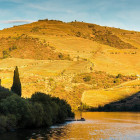Wine has been part of everyday life for hundreds – if not thousands – of years, and as such as been subject to all kinds of trends and fashions du jour. One that we’re seeing more of nowadays is unfiltered wine – a movement that appears to align with society’s increasing drift towards things that are considered ‘green’ and ‘authentic’. But what is unfiltered wine? And is it really a more ‘natural’ choice?
Why is wine filtered?
Let’s start with filtered wine – a traditional winemaking process that has served wine aficionados perfectly well throughout its history. When a wine completes fermentation, it’s full of sediment and floating yeast – usually called ‘blind’. This cloudy wine is then filtered twice – the first to remove yeast particles and the second to remove small bacteria – before it is bottled.
Making unfiltered wine
When it comes to unfiltered wines, however, this step is skipped. The wine doesn’t stay cloudy, though. Instead, the wine is simply left to rest in its tank, allowing the yeast to gently float to the bottom. Once gravity has done its job, the wine is racked from the lees – that is, the clear wine is siphoned off from the cloudy sediment at the bottom of the tank.
What difference does filtering make?
A wine will have more or less the same level of clarity whether it’s filtered or not – so why bother filtering it? Well, from a biochemical point of view, it’s arguably safer. Finished wine is essentially a liquid hovering between juice and vinegar, meaning it’s in a constant state of change and always in danger of going bad. As such, removing that additional bacteria helps to reduce the risk of spoilage.
That’s not to say that unfiltered wines are inherently full of bacteria, though – there are ways to supress bacterial activity without filtration. This can be done during the second (malolactic) fermentation, although this usually means the wine loses its primary fruit flavours and instead develops nuttier, creamier aromas. Alternatively, unfiltered wine can be stabilised by adding a higher dosage of sulphites.
What are the benefits of unfiltered wine?
Advancements in winemaking techniques and a better understanding of how to best store wine to avoid spoilage means that it’s now much safer to experiment with unfiltered wines – so what are the benefits of doing so?
This is certainly a divisive question among oenophiles. In conjunction with the growing popularity of natural winemaking, some producers claim that filtration has a negative impact on the character of a wine. Their view is that filtration results in a less flavourful, more generic-tasting wine. Or, to turn the argument on its head, they maintain that unfiltered wines are more flavourful and interesting.
However, some studies have concluded that filtration has a negligible effect on a wine’s flavour, and that any differences between the two may lay in the slightly deeper colour and heavier mouthfeel unfiltered wines produce – indeed, these are valid elements that make wine enjoyable, and therefore it’s feasible that drinkers might have a preference.
Tasting filtered and unfiltered wines
As with so many things in the vast, glorious world of wine, your preference for filtered or unfiltered vino will come down to personal taste. You may not even be able to identify any differences in flavour, but simply prefer the idea of one over the other. Why not explore this in a tasting session? While sweet whites, floral whites and large production wines are almost always filtered, look towards small production reds, white wines aged in oak and dryer wines for unfiltered varieties.






